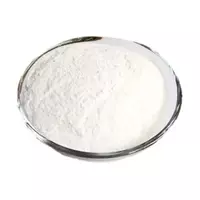Rice flour

Rice, which is a very valuable crop, is an annual plant from the cereal family. Notably, it is considered a staple for most of our planet and the second most important cereal crop after wheat. Rice not only makes a lot of various dishes, but also makes very useful rice flour, which serves as the basis for the preparation of all kinds of healthy and delicious products.
In terms of starch content and biological value of protein, rice flour rightfully occupies one of the leading places among other types of flour obtained from cereals. It is known that rice grain flour is an excellent source of a considerable amount of natural macro and trace elements, as well as vitamins, which makes this product extremely useful for the nutrition of people of absolutely all ages, especially children.
A distinctive feature of rice flour can be called the fact that it is considered a starch-containing raw material, in which gluten is completely absent. In this regard, rice flour has found widespread use in dietary and therapeutic nutrition, in dietary therapy for people with cardiovascular diseases, acute chronic enterocolitis and other ailments.
In addition, rice flour is the basis for the production of sometimes indispensable cereals and meat-and-vegetable canned food for babies. These products, along with breast milk, are used as complementary food for children during the first year of their lives starting at the age of four months.
Another critical aspect of the use of rice flour is the direction of dietary nutrition, which can be described as gluten-free. Such a diet is vital for a number of people who suffer from a certain type of allergic reaction - celiac disease. This is a disease in which there is a complete intolerance to gluten protein. The only disadvantage of the absence of gluten is the inability to bake yeast bread from rice flour, which is hotly loved by many people.
Rice flour is the basis of rice paper, which is widely used in Asian countries to prepare numerous national dishes, in particular rolls, thereby replacing nori algae. In addition, rice flour can be used as raw materials for baking various bakery products, make pasta (rice noodles) from it, as well as some confectionery products.
For example, bread and tortillas, which are baked from a mixture of rice flour and other types of this bulk product, result in a very crunchy and porous texture. Such bread is best consumed by drying it on the grill or in a toaster - it is very tasty.
However, when using rice grain flour, there is one problem - the finished products are characterized by increased dryness, since this product absorbs a lot of moisture. To avoid this, it is enough to simply add more liquid or eggs to the dough and store the finished flour products in an airtight container.
rice flour 366 kCal
Energy value of rice flour (Ratio of proteins, fats, carbohydrates - ju):
Proteins: 5.95 g (~ 24 kCal)
Fats: 1.42 g (~ 13 kCal)
Carbohydrates: 77.73 g (~ 311 kCal)
Energy ratio (b | y): 7% | 3% | 85%
 Español
Español Français
Français Português
Português Русский
Русский 简体中文
简体中文 繁體中文
繁體中文 日本語
日本語 한국어
한국어 العربية
العربية Türkçe
Türkçe Қазақ
Қазақ Deutsch
Deutsch Italiano
Italiano Українська
Українська
